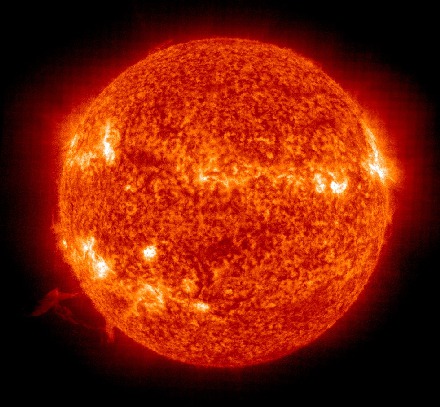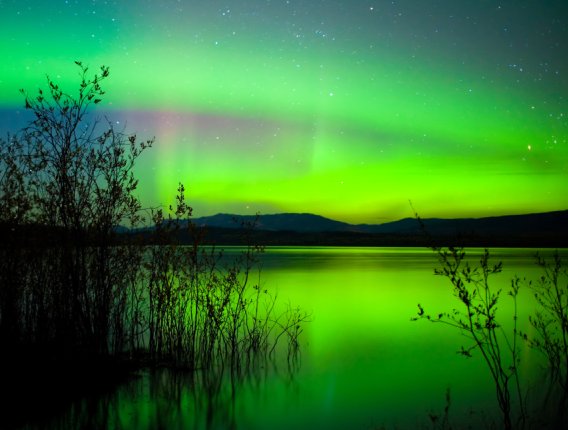
CME Cloud Headed towards Earth -- Weekend Northern Lights Show Possible

Charged Particle Cloud from Sun heading towards Earth
When does the Aurora storm watch begin?
Details and Northern Lights Viewing Tips
By Jim Thomas -- Soft Serve News, Posted: April 11, 2013
A Coronal Mass Ejection (CME) emanating from the Sun is heading towards Earth and may cause a Northern Lights show. A CME is a fast moving cloud of charged particles. The CME was caused by a M-Class solar flare that occured on the sun on April 11, 2013.
NOAA's Space Weather Prediction Center has issued a 48 hour magnetic disturbance storm watch beginning at the time indicated above. It is this disturbance of the Earth's magnetic field that causes the Northern Lights. The arrival time and duration are rough estimates. Real-time Aurora Borealis forecasts can be obtained at the Aurora Borealis Forecast page at Soft Serve News. This page should be checked at the last minute to see what is happening with the Aurora if you intend to try and see it.
You can also get Aurora Alerts to let you know when the Northern Lights display is large via Facebook or Twitter
Strong CMEs can sometimes cause trouble for satellites and create problems with electrical grids by inducing currents as the CME cloud interacts with the magnetic field that surrounds the earth. NOAA indicates that power grid fluctuations may occur and high-latitude power systems may experience voltage alarms.
NOAA estimates the CME might produce a Kp number of 6, but that's never fully known until it hits Earth. The Northern Lights, also known as the Aurora Borealis, can range from a faint green glow on the northern horizon to a multicolored, full-sky display which can be one of the most beautiful and awe-inspiring scenes in nature.

WILL YOU BE ABLE TO SEE THE AURORA?
To determine if you can see the Northern Lights use the following three steps:
Step 1 -- Know your Location's "KP number."
The KP number is the Geomagnetic Activity Level. The stronger the Aurora, the larger the KP number and the further south it can be seen. Find the KP number for your location on the one of the maps below. On the night you wish to view, periodically check the real-time Aurora Borealis Forecast. This will give you the KP number prediction for the Aurora for the next hour or so. If that number is greater or equal to the number on the map for your location, you're in luck. Even if the predicted number is one or two points too low, it still might be worth a look.
North America

Europe & Asia

Step 2 -- Check the Weather.
Auroras happen in the upper atmosphere, so if there are clouds blocking your view of the stars, you won't be able to see the Aurora.
Step 3 -- Shop for a Dark Spot.
Get away from those city lights. Darkness is best for viewing the Aurora. The fewer competing lights sources, the better. But it is also very important to remember the widest part of the Aurora is when the sun is on the opposite side of the earth. So you want late, nighttime dark.
EXPECTATIONS
Experienced Northern Lights hunters are familiar with disappointment. Predictions of when the CME cloud hits the earth are not always accurate. Sometimes CME events produce much smaller displays than expected, or even none at all. Also, it is possible the main Auroral event happens during the day and therefore can only be enjoyed by people on the other side of the world where it's dark.
Even with these uncertainties, seeing the grandeur of a powerful Aurora Borealis display may be a once in a lifetime event, so for some it's worth the gamble to try.
Home
| Aurora News | Refresh | About


